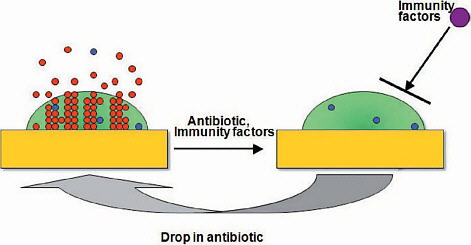
At times, the most significant revelations are those that researchers overlook for years. Scientists investigating a bacterium, which has been preserved in laboratory freezers since the 1950s, have recently uncovered an antibiotic that is 100 times more effective than any previously known product of the organism. The twist? It was concealed as an inconsequential component in a chemical process the bacterium had been utilizing all along.
This substance, known as pre-methylenomycin C lactone, serves as an intermediary in the creation of methylenomycin A, a recognized but comparatively weak antibiotic first extracted 50 years ago. Chemists from the University of Warwick and Monash University stumbled upon it by essentially disrupting the bacterium’s production line: systematically removing genes to observe which unfinished compounds accumulated.
“Methylenomycin A was initially discovered 50 years ago, and although it has been synthesized multiple times, it seems that no one has tested the synthetic intermediates for their antimicrobial effects,” states Professor Greg Challis, a co-leader of the study appearing in the Journal of the American Chemical Society. “By knocking out biosynthetic genes, we uncovered two previously unknown biosynthetic intermediates, both of which exhibit significantly greater antibiotic potency than methylenomycin A itself.”
An Acquainted Microbe with Surprising Capabilities
The bacterium under consideration, Streptomyces coelicolor, is somewhat of a staple in laboratory settings. It is the type of microbe that graduate students gain experience with, serving as a model organism for comprehending how soil microorganisms produce medically valuable compounds. The fact that it still harbored undiscovered knowledge is, to put it mildly, unexpected.
Dr. Lona Alkhalaf, Assistant Professor at Warwick and co-leading author, reflects this astonishment: the bacterium “is a model antibiotic-producing species that has undergone extensive study since the 1950s. Discovering a new antibiotic within such a familiar organism was quite a revelation.” It resembles finding out that your neighbor has been holding onto a winning lottery ticket for fifty years.
The researchers theorize that S. coelicolor initially produced pre-methylenomycin C lactone as its main defense substance but evolved to alter it into the weaker methylenomycin A, perhaps for a distinct biological purpose. Evolution does not always optimize for the strongest impact.
Effectiveness Against Major Threats
When the team evaluated pre-methylenomycin C lactone against a variety of bacteria, it obliterated Gram-positive pathogens, including strains related to MRSA (methicillin-resistant Staphylococcus aureus) and VRE (vancomycin-resistant Enterococcus). These are significant threats: VRE is identified on the WHO’s list of high-priority pathogens, and vancomycin is frequently a drug of last resort.
Even more remarkable, the researchers were unable to induce Enterococcus bacteria to acquire resistance to the compound under conditions that usually lead to vancomycin resistance. Such durability is uncommon and invaluable in the realm of antibiotics, where resistance can develop more rapidly than new medications can enter the market.
The compound boasts a straightforward structure, which is favorable for synthesis. A team from Monash, spearheaded by Professor David Lupton, released a scalable synthesis pathway earlier this year, indicating that the molecule can be generated in adequate quantities for additional testing. Lupton mentions that the synthesis “should facilitate the creation of a variety of analogues that can be employed to investigate the structure-activity relationship and the mechanism of action.”
The forthcoming stage involves pre-clinical testing, the rigorous process that distinguishes laboratory novelties from potential clinical candidates. With antimicrobial resistance resulting in approximately 1.1 million deaths annually, the stakes are evident. Challis describes the discovery as a possible transformative moment: “By identifying and examining intermediates in the pathways to various natural compounds, we may uncover powerful new antibiotics that exhibit greater resilience to resistance.”
It serves as a reminder that nature’s rough drafts can sometimes surpass the final iterations. The pressing question now is whether this particular rough draft can successfully reach the pharmacy.
[Journal of the American Chemical Society: 10.1021/jacs.5c12501](https://doi.org/10.1021/jacs.5c12501)